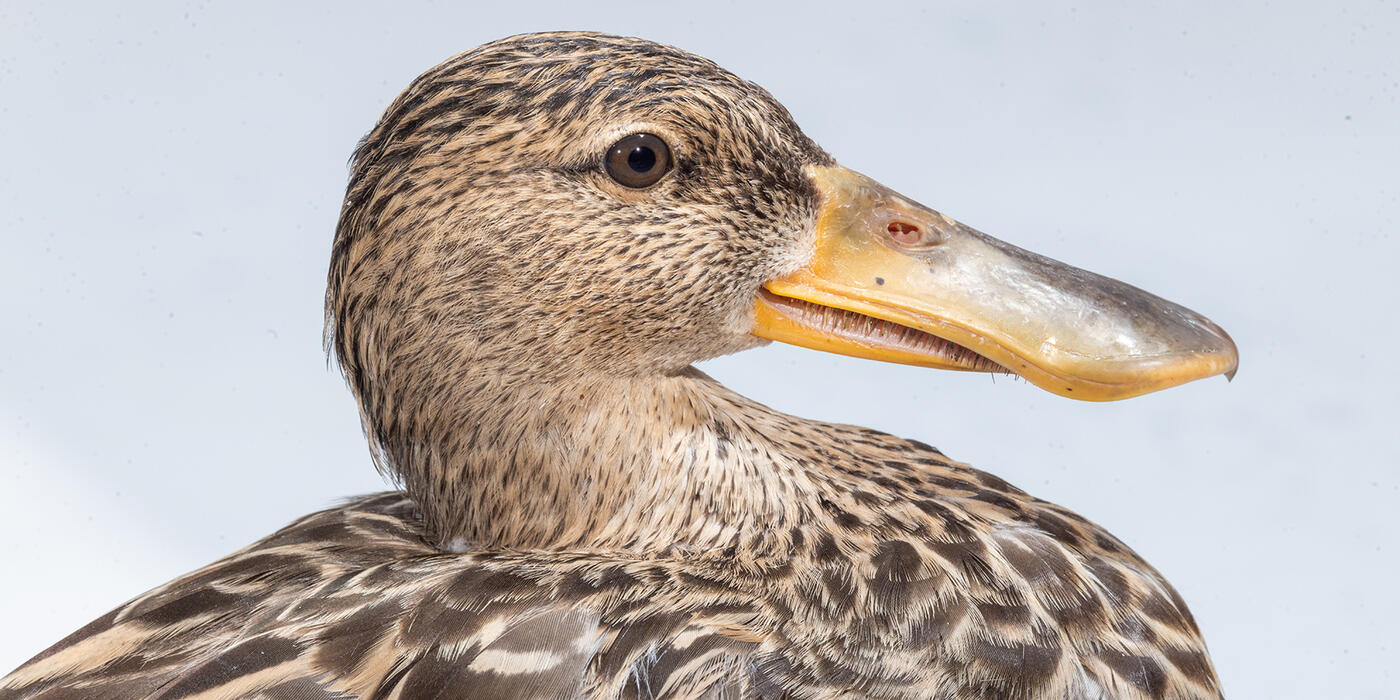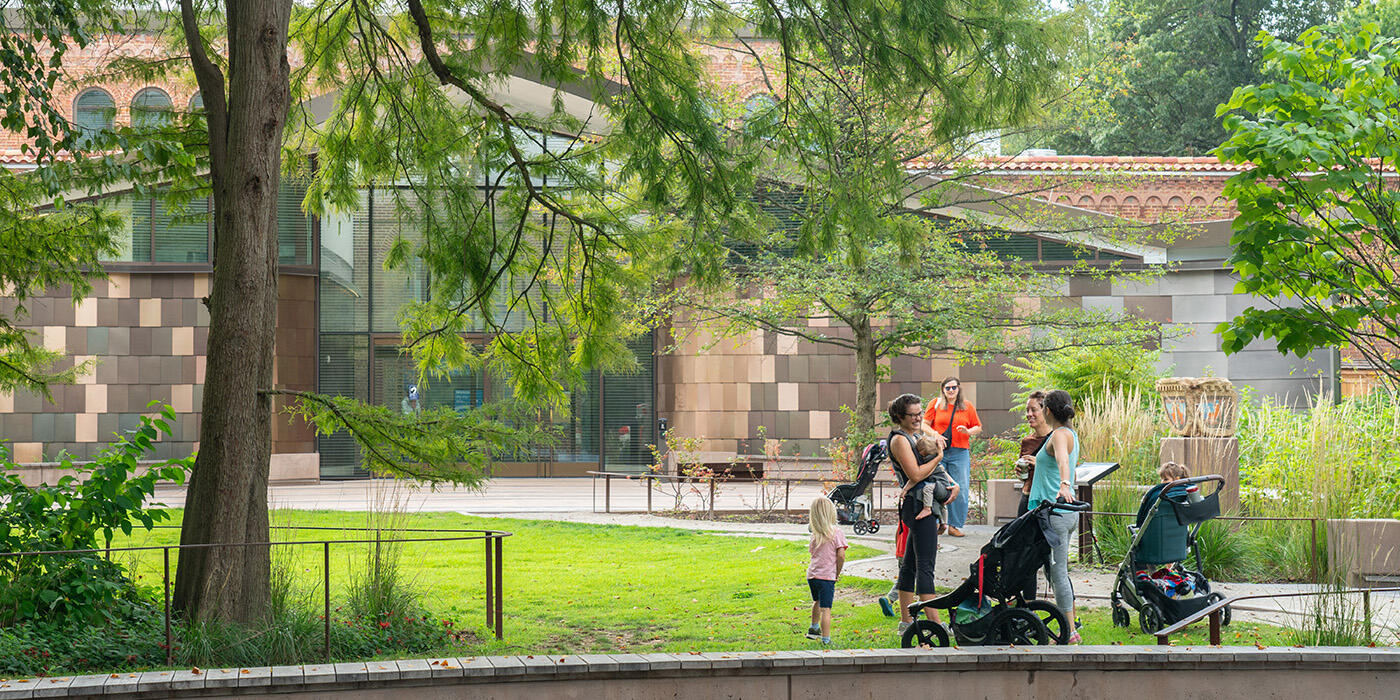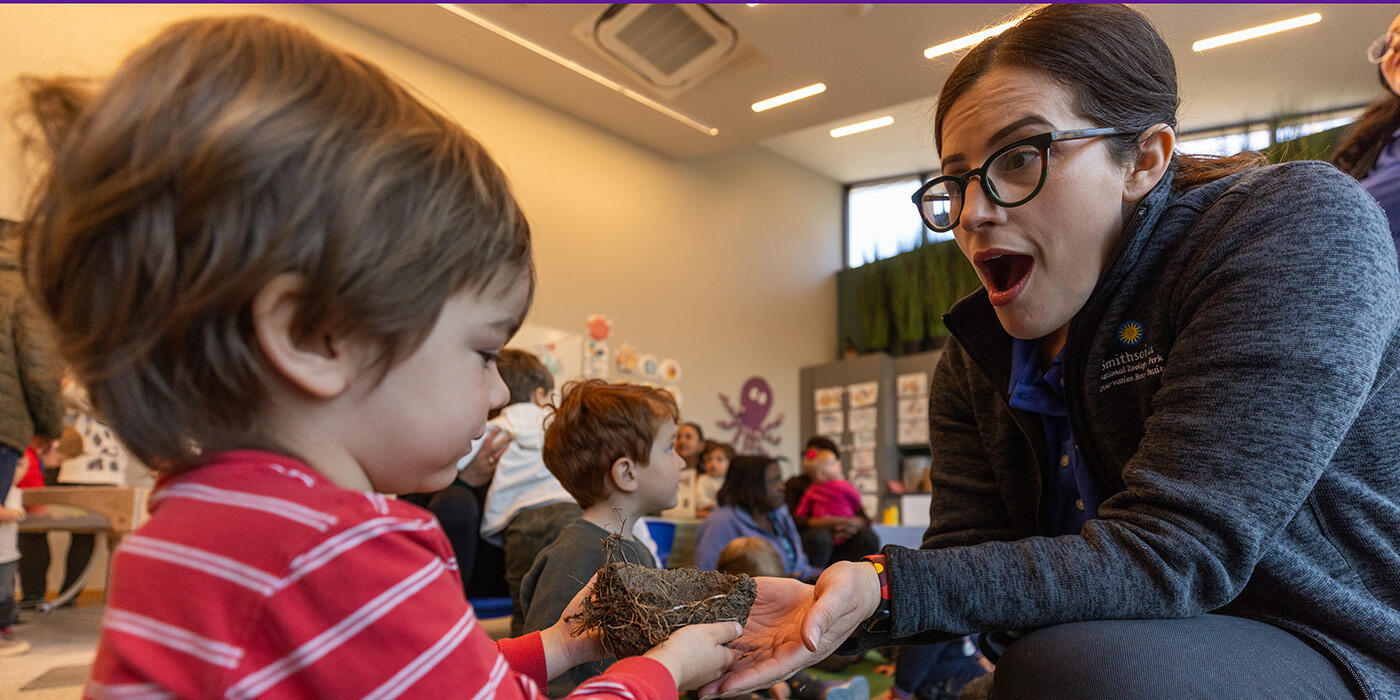Summer is for the Birds
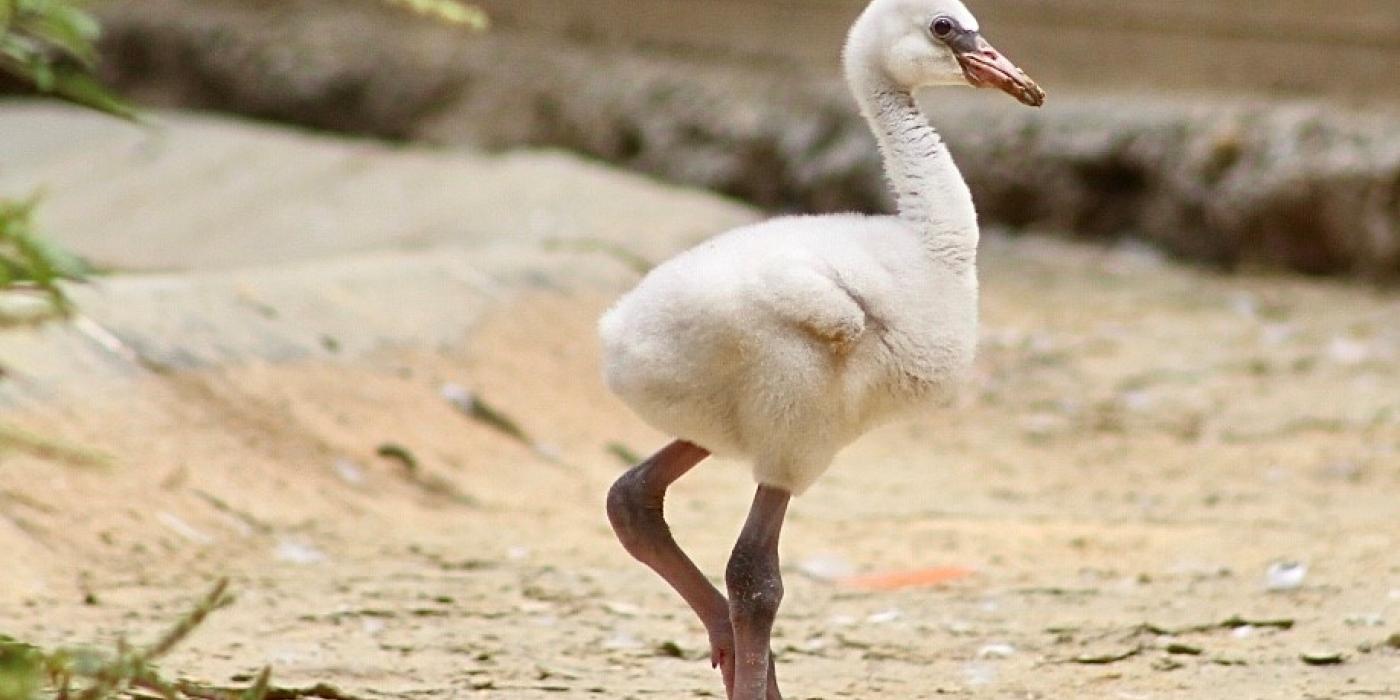
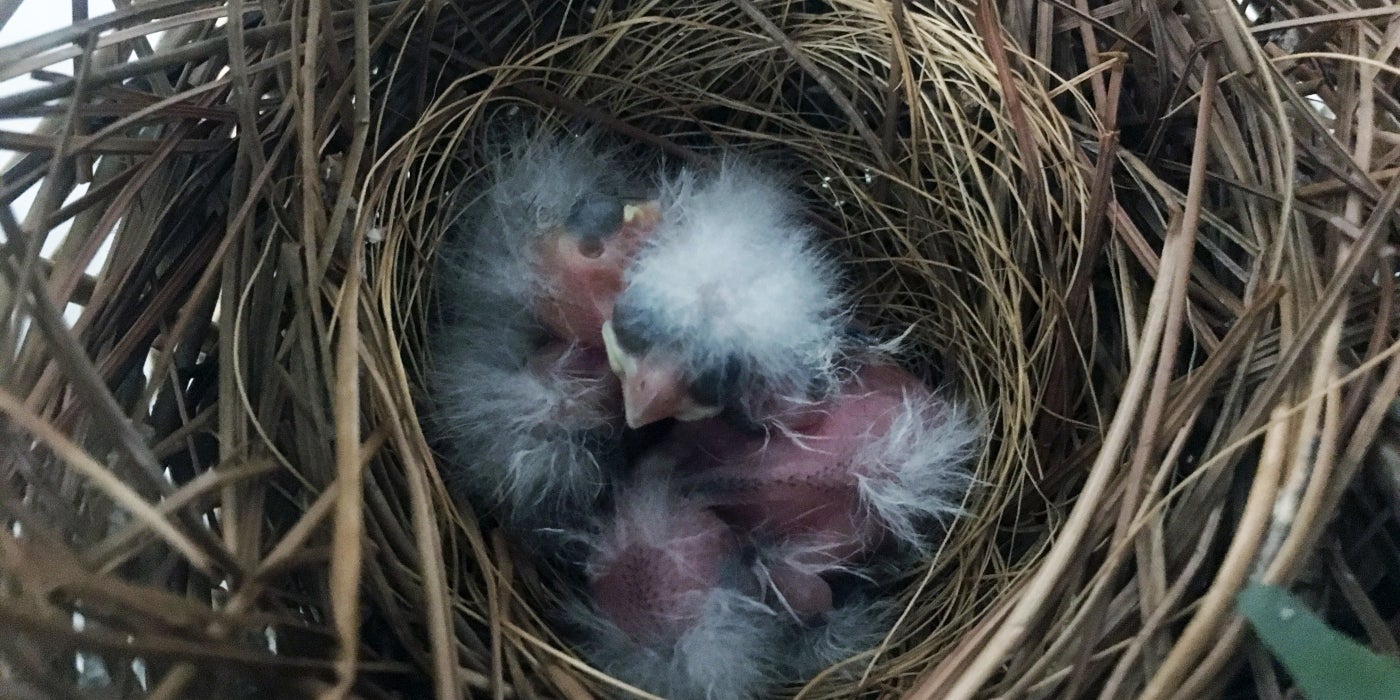
Rose-Breasted Grosbeak | Stacy Hill
Rose-breasted grosbeak juveniles look like adult females, but they hide a distinct difference underneath their wings. Female juveniles will carry yellow feathers, while male chicks sport pink feathers. We used this trick to determine the sex of our first chick—a female—who hatched June 7. Two more chicks hatched July 18. These three siblings are the first of their species to hatch at the Smithsonian’s National Zoo!
Rose-breasted grosbeak nests can look rather sparse. To help mom build her nests, we added some small baskets in her enclosure and provided her with pine needles, twigs and coconut fibers. Normally, mom does 50 to 75% of the feeding and incubating. Because mom was inexperienced, dad did most of the rearing for the first chick. What really surprised us was that “big sister” helped care for her siblings by brooding and feeding them!
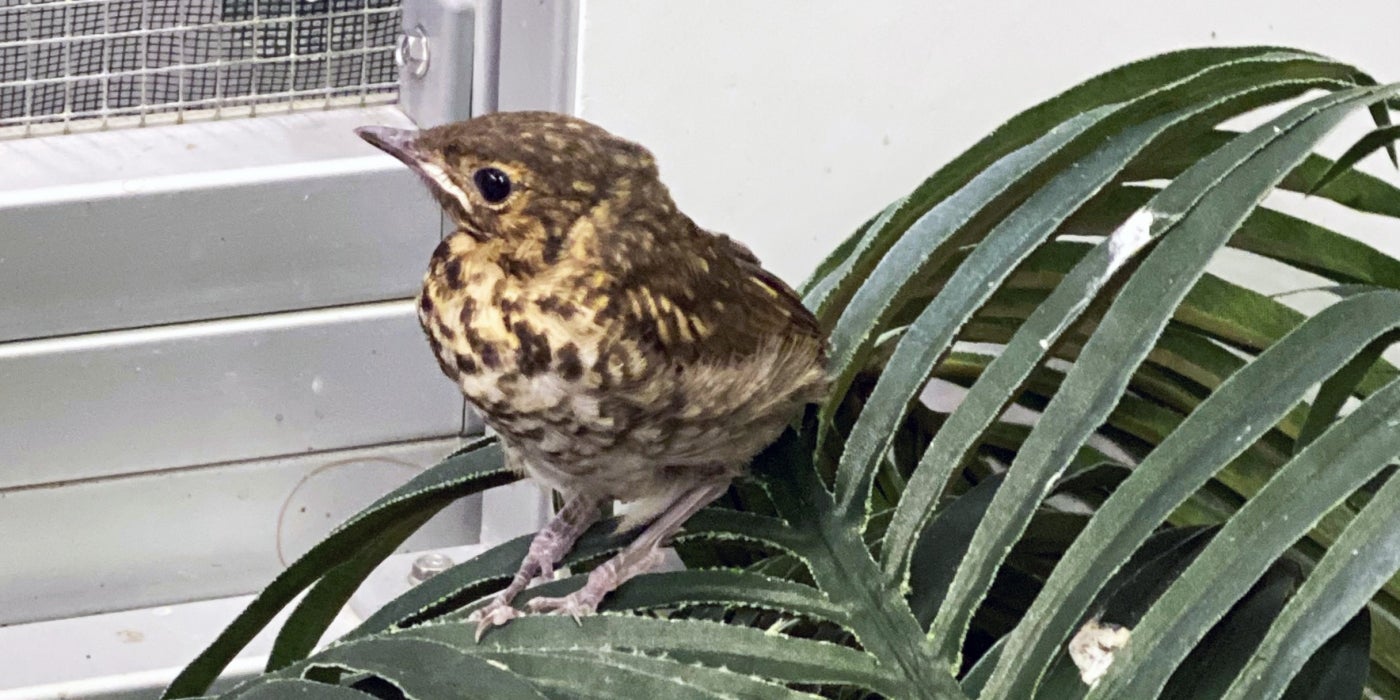
Swainson’s Thrush | Kathy Brader and Shelby Burns
The last recorded hatching of a Swainson’s thrush in human care dates back to the 1950s, across the pond in Great Britain. We were quite surprised (and pleased) when our male and female bred! In the wild, this species tends to abandon nests that are near hiking trails. After adding more bushes and trees to the enclosure so they could hide, we noticed they built their nest in a fern near the keeper door. We used another entry exclusively to minimize disturbance, and left them alone. Our efforts paid off when two chicks emerged from their shells July 6 and 7.
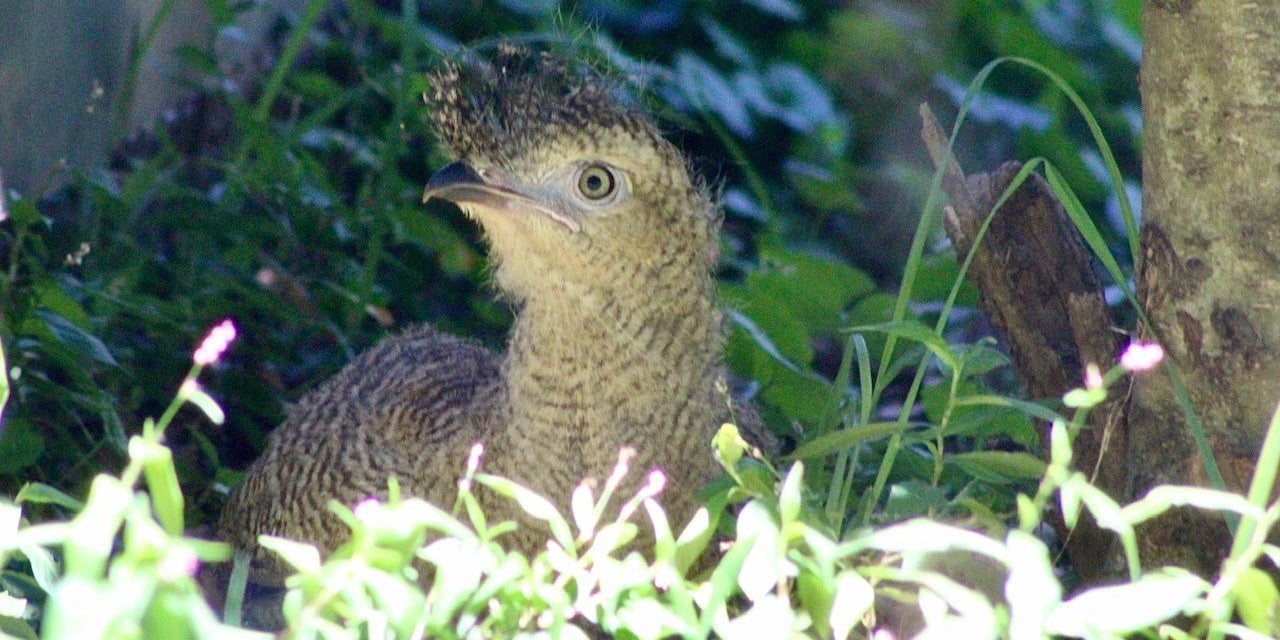
Red-Legged Seriema | Heather Anderson
At the center of our red-legged seriema exhibit stands a tree with dense foliage. It is at this secluded spot where the parents built their nest and raised their chick, which hatched June 6. This species is built for speed and has been clocked running 43 miles per hour. When they aren’t nesting or running, they rest and recharge by sunbathing.
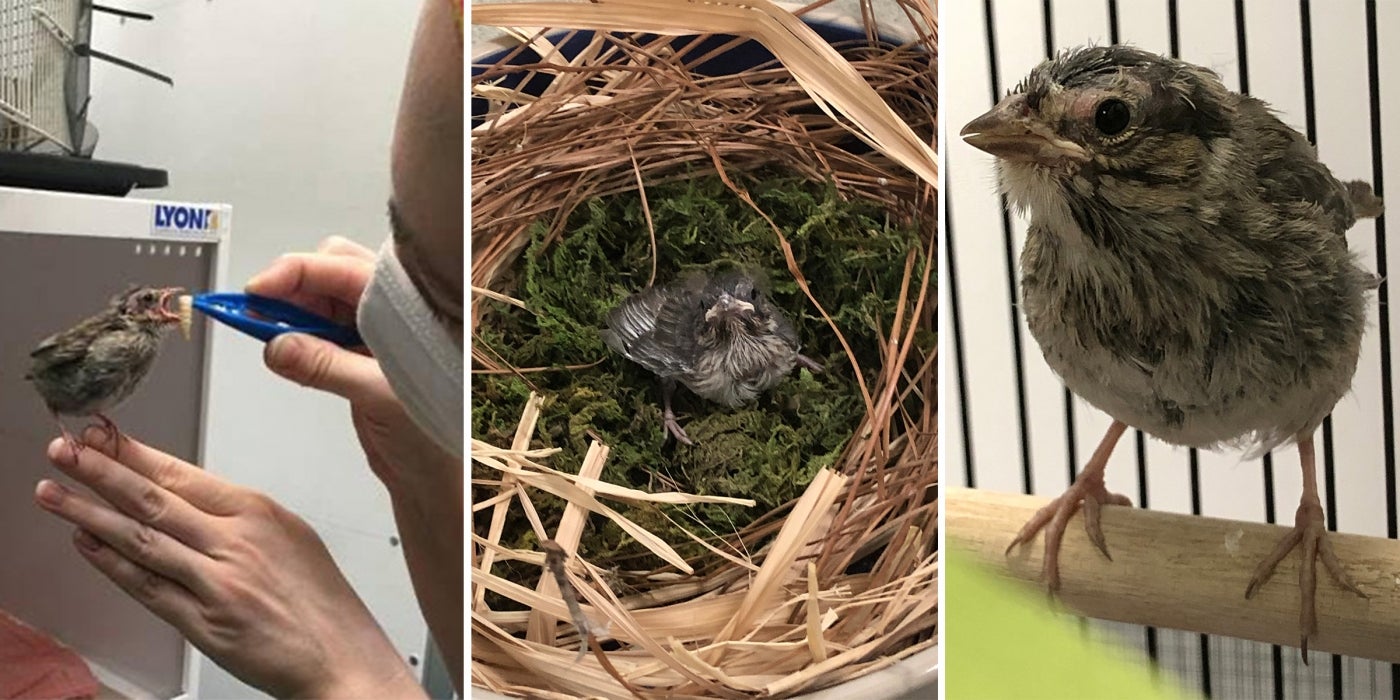
Song Sparrow | Stacy Hill
When a male song sparrow courts a female, he does a “pounce” behavior—he hops around and near her on branches before pouncing on her. Then, he will fly to a tall perch and sing a series of trills and whistles. The female will join in the song with her own chattering call and flutter her wings. Previously, we did not know that males did this “pounce” behavior, so it was amazing to see it for ourselves!
This is the first time in the Zoo’s 131-year history that we have welcomed song sparrow chicks. The pair’s first chick hatched May 28. As soon as that chick fledged, mom wasted no time in building a new nest. Our second chick hatched June 21, and our third emerged from its shell June 23. Because our first-time dad couldn’t quite get the hang of feeding duties, keepers stepped in to help mom feed their chicks.
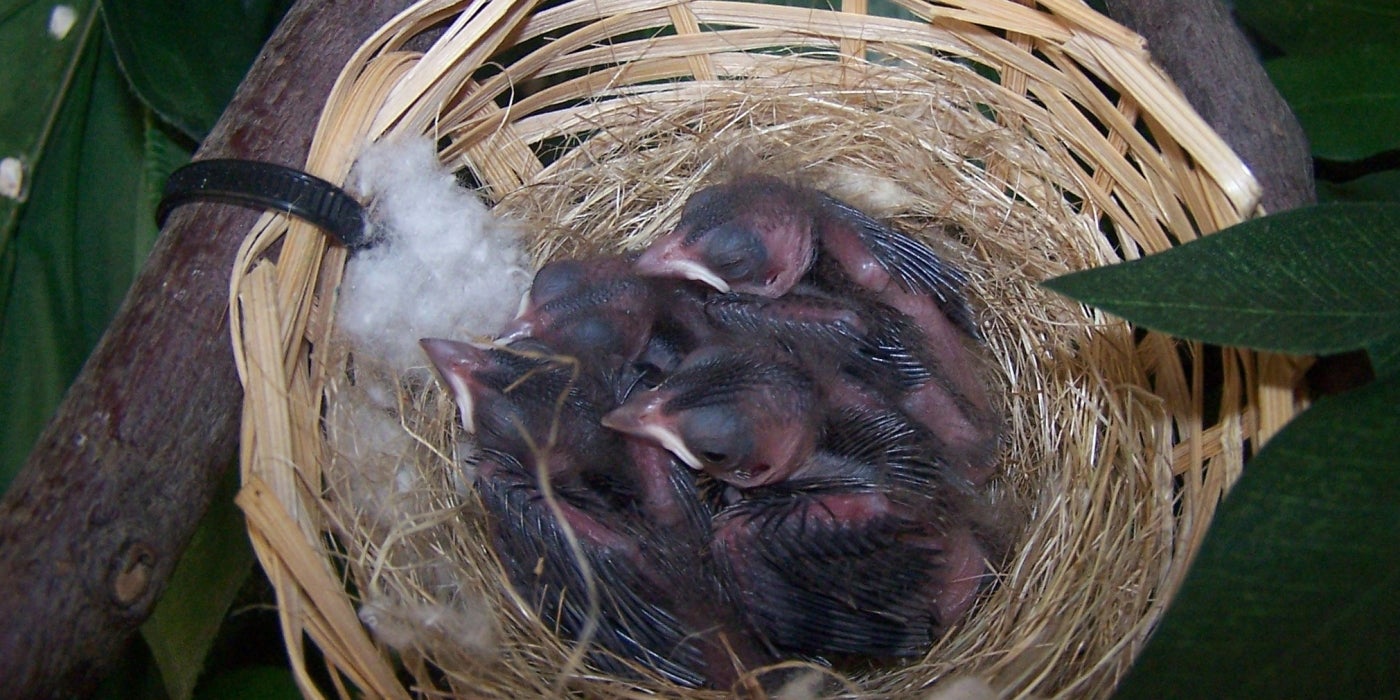
Indigo Bunting | Kathy Brader, Shelby Burns and Stacy Hill
Male indigo buntings are highly territorial. If one male so much as sees another male, he will spend all his time defending his area against perceived threats instead of breeding! Our adult pair, located at the science building, produced four chicks this year, which hatched July 20 and 21. Typically, this species breeds earlier in the year, so it was an exciting surprise when these chicks arrived on the scene.
Meantime, over at the propagation building, we also prioritized giving our indigo bunting pair privacy and space during breeding season, and we reduced keeper interactions. They produced three chicks, which hatched over the course of two days June 16 and 17. Their mother has done an excellent job raising the chicks, feeding all three waxworms and mealworms long after they had fledged!
Apart from their color, what sets indigo buntings apart from other birds is the way they learn their songs. Youngsters learn these vocalizations from nearby males, but not from their fathers! Buntings located in the same “song neighborhood” share nearly identical songs, while birds a few hundred yards away sing different tunes. A local song may persist up to 20 years, gradually changing as new singers add novel variations.
While it is not possible to determine the sex of the juvenile birds until their first molt—when males get their beautiful blue feathers—one of the propagation building chicks is already singing! Since singing is usually a male behavior, we believe we have at least one boy! Interestingly, during the winter, both males and females sport nearly identical brown plumage. Come next spring, we will be able to determine the chicks’ sexes for sure.
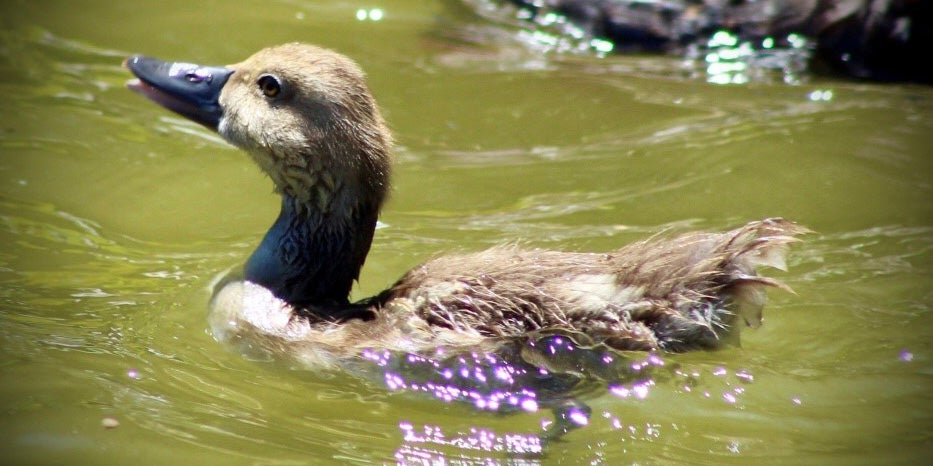
Redhead Duck | Heather Anderson
Redhead ducks often lay their eggs in other birds’ nests—a behavior known as “brood parasitism.” This spares redhead moms the biological expense of raising their own chicks. In spring, our team had the opportunity to witness this behavior firsthand. Keepers created several nests with fake eggs to encourage our female to lay. In the end, she laid her egg in a wild mallard nest within the habitat! Our redhead duckling hatched May 17 and was raised by the mallard mom alongside several mallard siblings. Mama mallard was none the wiser that one of her ducklings was not like the other!
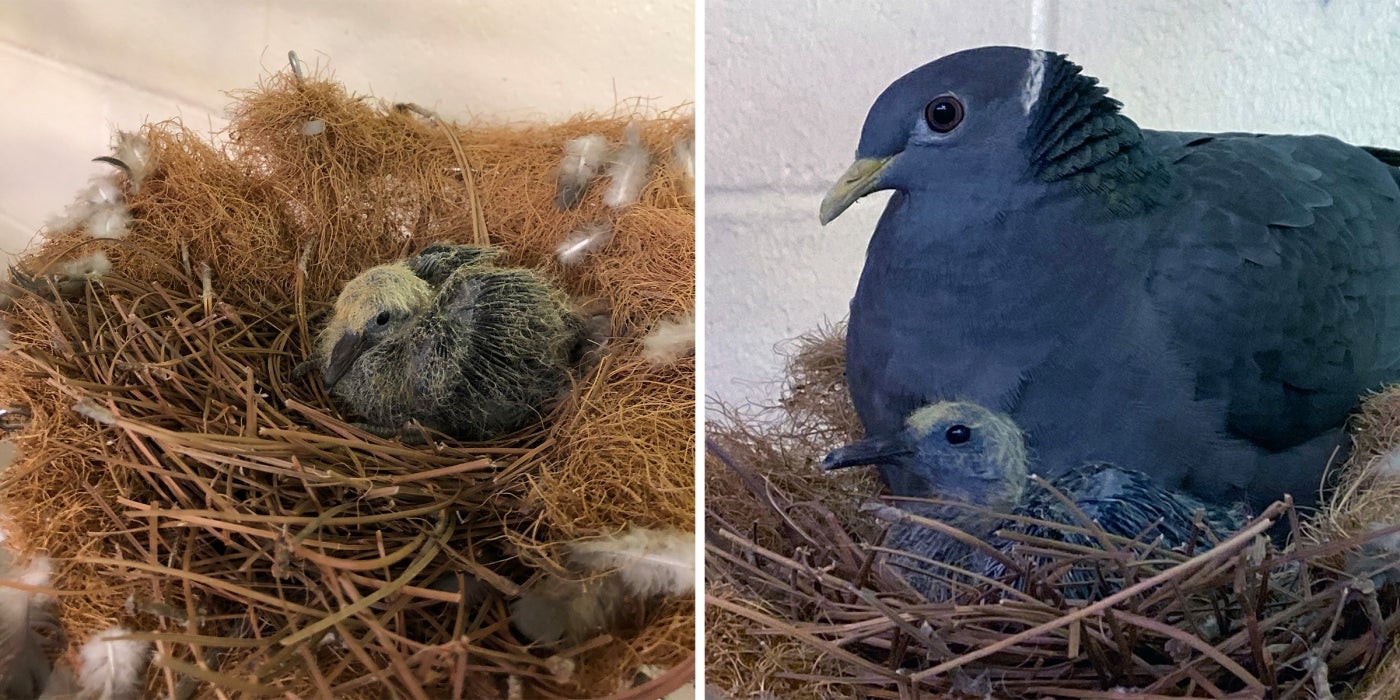
Band-Tailed Pigeon | Kathy Brader and Shelby Burns
Band-tailed pigeons are beautiful birds with a lot of personality! To set the mood for breeding, we built the pigeons’ exhibit with their natural habitat in mind. This entailed offering them plenty of places to perch, vegetation to hide in and UVB lights to bask under. We also gave them several nesting location options and materials, including coconut fibers and pine needles. This pair learned from their last successful hatching and created an even sturdier, more intricate nest by adding pine needles and molted feathers.
Mom laid an egg March 27, and both she and dad took turns incubating it. Dad took the morning shift, and mom relieved him of his duty in the afternoon and evening. Band-tailed pigeons typically incubate for 16 to 22 days. This squab hatched right on time: day 18. This pair has continued to learn and improve their parenting skills. Both mom and dad are very attentive to the squab and take turns feeding it crop milk. We are excited that this family continues to grow, and we look forward to guests meeting them in our Bird Friendly Coffee farm aviary when the Bird House opens in late 2021.
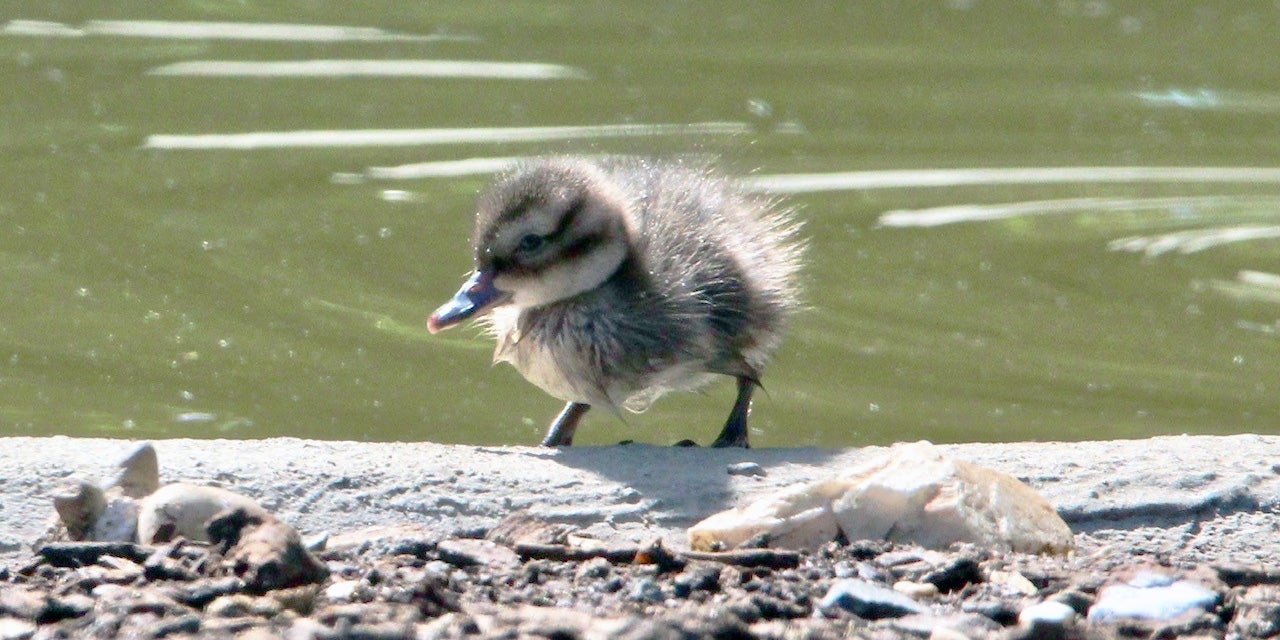
Northern Pintail Duck | Heather Anderson
This year, we made some adjustments to our flamingo habitat, which also houses redhead ducks and Northern pintails. This species breeds in grasslands and meadows, so to make them feel more at home, we added more than 60 grass plantings to the exhibit. We were thrilled to welcome a chick May 8. One of the most endearing traits of this species is the way they greet each other. Males and females will lift their chins up—a head nod “hello!”
Wood Thrush | Kathy Brader, Shelby Burns and Stacy Hill
The wood thrush is a consummate songster, and it can sing “internal duets” with itself. In the final trilling phrase of its three-part song, it sings pairs of notes simultaneously, one in each branch of its y-shaped syrinx, or voice box. The two parts harmonize with each other to produce a haunting sound!
At the propagation building, we celebrated the arrival of three wood thrush chicks—two females and one male—June 9, 10 and 12. This was incredibly exciting for several reasons, not the least of which is that mom hatched at the Zoo last year. That means we now have second generation hatchlings under our care! Wood thrush spend most of the year alone and only come together for breeding. Our female and male showed no interest in each other until the very last time we attempted introductions. As a first-time mom, it took the female some time to figure out how to construct her nest. This species is known for their nest-building “wiggle:” they lay down materials, sit in the nest, then kick and push with their feet until the structure is sturdy to their liking.
At the science building, we also had a second generation hatch! Two pairs produced four chicks altogether. The first chick hatched June 16, and the following three emerged from their shells July 6 and 7. Although these parents were less successful with building their own nests, we provided them with artificial ones, which seemed to suit them just fine.
Have you ever wondered how birds keep their nests clean? Chicks produce waste in a form called a “fecal sac,” a gelatinous package of droppings. Parents collect the sacs and either carry them away to dispose of them, or, sometimes, they just eat them—as we’ve observed our wood thrushes do!
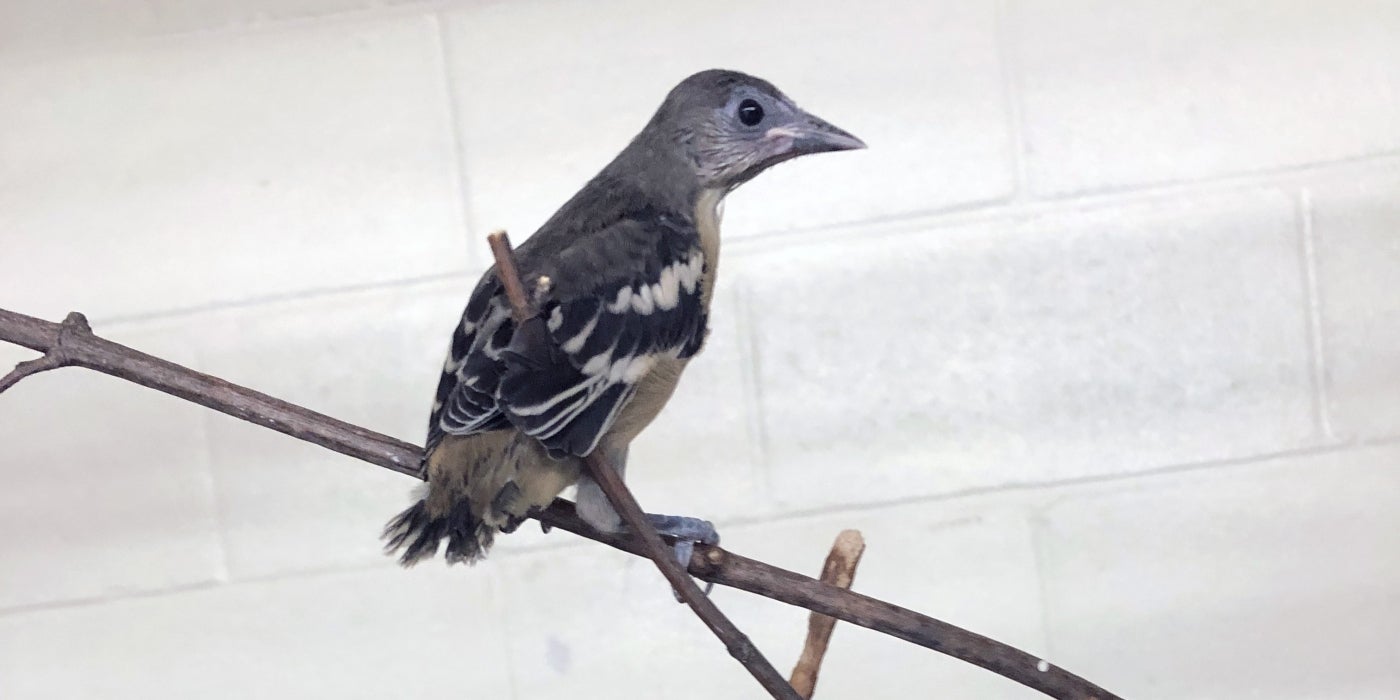
Baltimore Oriole | Kathy Brader and Shelby Burns
Baltimore Orioles are named for their bold orange-and-black plumage—the colors they share with the heraldic crest of England’s Baltimore family! Our female was hand raised by keepers; she was thrown out of her mother’s nest at just four days old. Her mate has a rather rough reputation—he does not get along well with exhibit mates. So, we kept a close watch on this pair throughout their time together. They had “spats” on and off, and we would separate them to ease tensions. We were pleased to see them get along, for the most part, and mom wove an intricate nest. The pair welcomed five chicks June 11 and 12. Around day 9, dad became a little too “high-spirited,” so we separated them permanently. Our first-time mom was incredibly dedicated to her offspring and did a fantastic job of raising the chicks on her own.
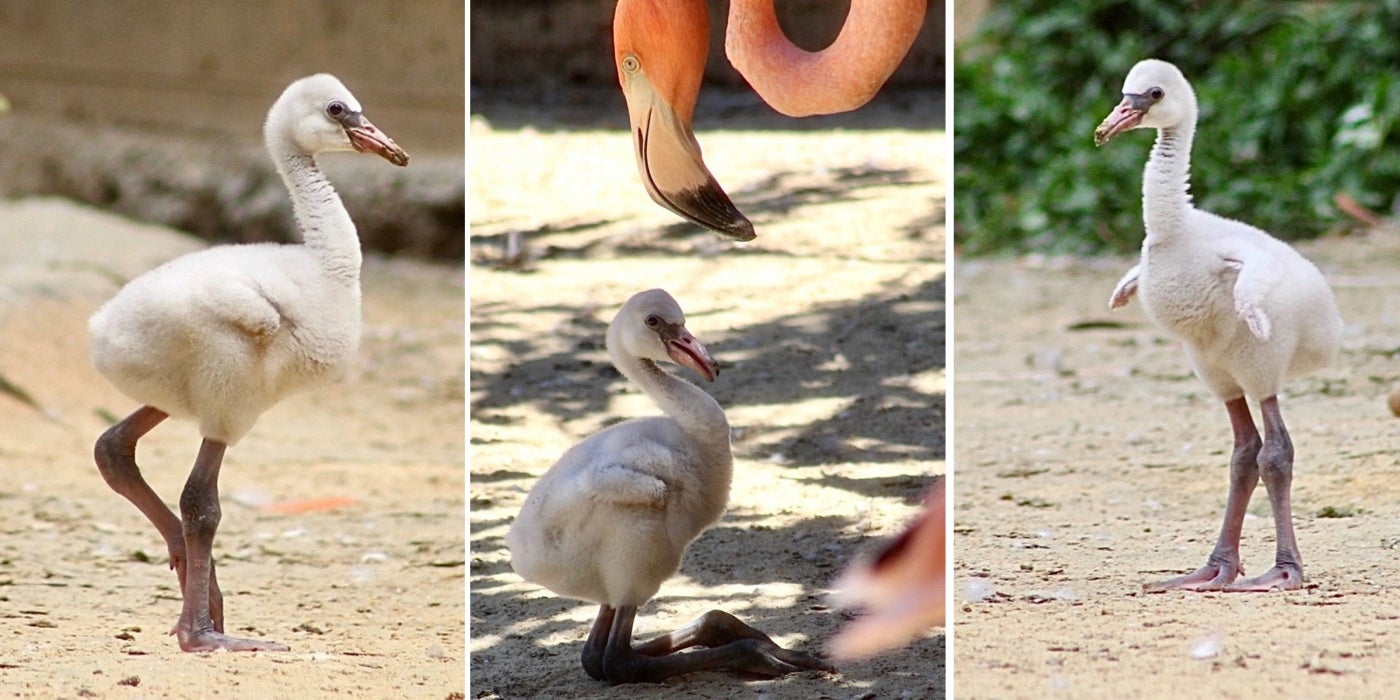
Flamingo | Sara Hallager
The Smithsonian’s National Zoo has bred flamingos since 1992. In the span of 28 years, more than 120 chicks have hatched here! This summer, we celebrated the arrival of three chicks at the Bird House. The eldest chick hatched July 6 and is being raised by its parents; the younger chicks hatched July 17 and 18 are being hand-raised by keepers. Feeding the growing chicks six times a day and tending to all their needs is a full-time job! Our colleagues in the Department of Nutrition Sciences prepared a nutritious formula which simulates the crop milk that parents feed their young. We also feed the hand-raised chicks pellets. Our goal is to help the chicks become self-sufficient by the time they are 1 month old. In late September, the chicks will be large and strong enough to be reintroduced to the colony. Currently, our flock is 67 flamingos strong and ranges in age from 1 month to 57 years old!
This story appears in the August 2020 issue of National Zoo News. In early 2022, the Smithsonian's National Zoo’s historic 1928 Bird House will transform into a first-of-its-kind attraction that immerses visitors in the annual journeys of western hemisphere birds. Learn more about this exciting project!
UPDATE Dec. 21, 2020: Please note that the Zoo is temporarily closed as a public health precaution to help prevent the spread of COVID-19.
Related Species:
